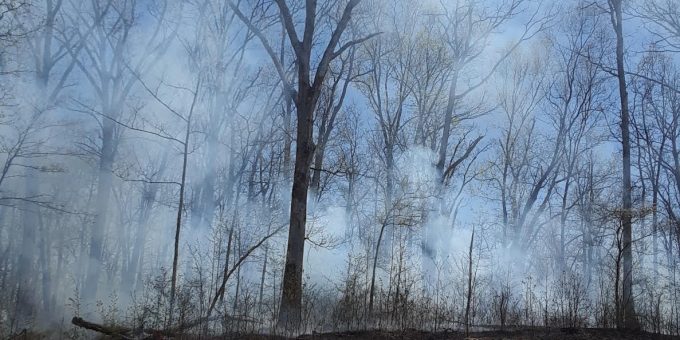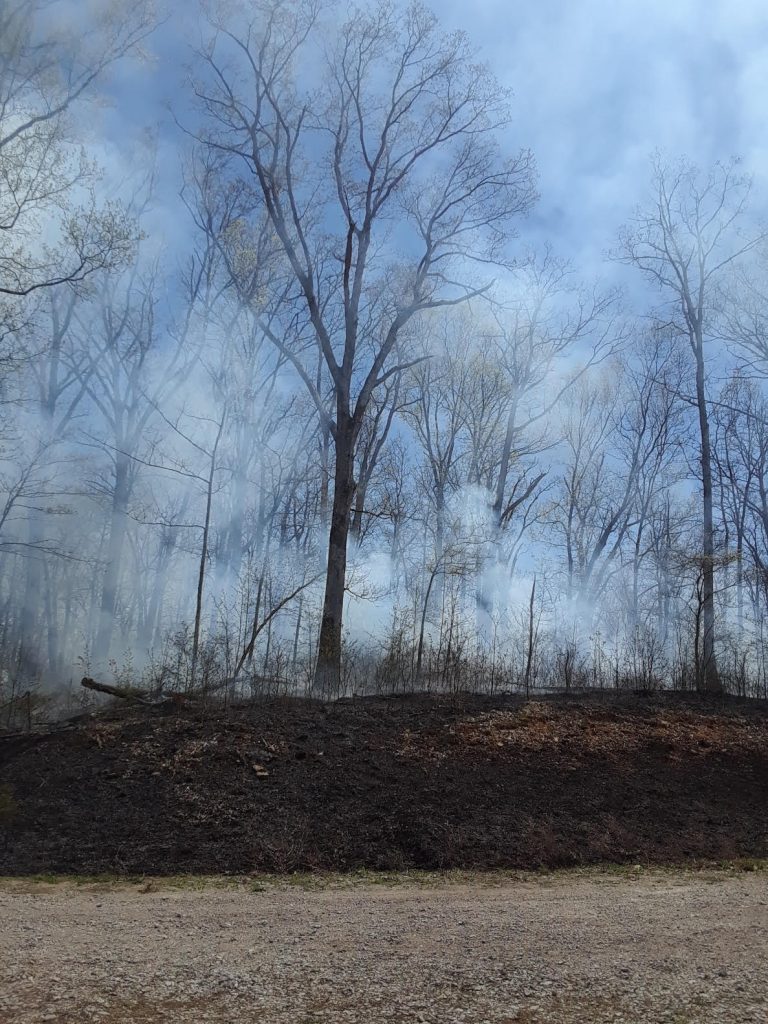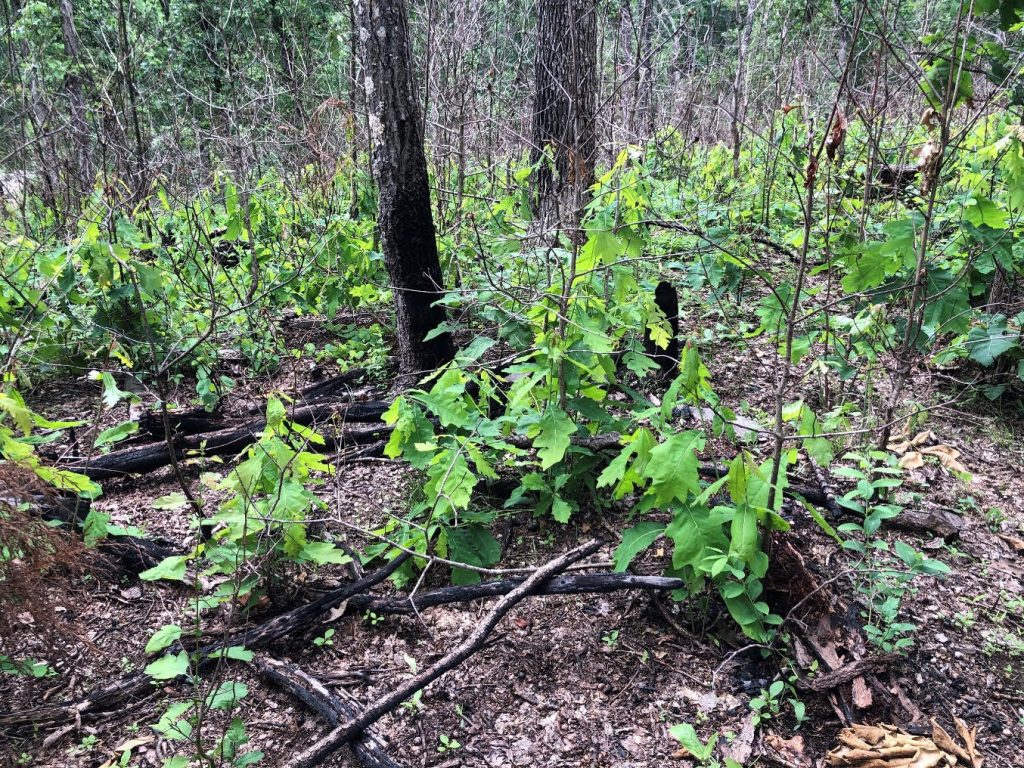
BEDFORD — The USDA Forest Service conducts seasonal prescribed burning in the Hoosier National Forest this spring.
Prescribed fire is used to maintain, restore, or improve early successional habitat for wildlife, maintain wetlands, restore and maintain unique barren communities, and restore oak-hickory-dominated ecosystems. It also reduces the amount of woody material on the forest floor, lowering the risk of catastrophic wildfires and increasing plant diversity.

downed woody debris. Plant life rebounds quickly.
Prescribed burns are conducted on National Forest System lands and through agreements with adjacent private landowners. Areas being considered for burning have signage placed in advance. Still, whether a fire will be implemented will be determined on the day of the burn after carefully evaluating critical factors and conditions. Forest staff notifies residents and businesses in the immediate area of a potential prescribed burn one or two days prior, depending on the neighbor’s preference. Check the Forest’s social media accounts for announcements of burns at www.facebook.com/HoosierNF/ and https://twitter.com/HoosierNF.

Designated burn units are closed to all public entry, including hunting, on the day of the burn and until the area is considered safe. For your safety, please get in touch with the Indiana Interagency Coordination Center Dispatcher (812-547-9262) if you plan to hunt or camp in or near a prescribed burn area.
Smoke is an unavoidable consequence of prescribed burning. Fire managers burn only under atmospheric conditions specified in a burn plan and rely on meteorologic data to choose days in which the impacts of smoke are minimized. Smoke plumes from a prescribed fire usually rise high into the air, where the smoke dissipates. If smoke is present on roadways, motorists should reduce speeds and turn on headlights.
All burns are implemented under carefully planned prescriptions and protocols to mitigate the risk of an escaped fire and smoke exposure to communities. Forest neighbors who wish to be notified of a specific burn date or those who want to report medical conditions that could be affected by smoke may contact the Indiana Interagency Coordination Center Dispatcher at 812-547-9262.



